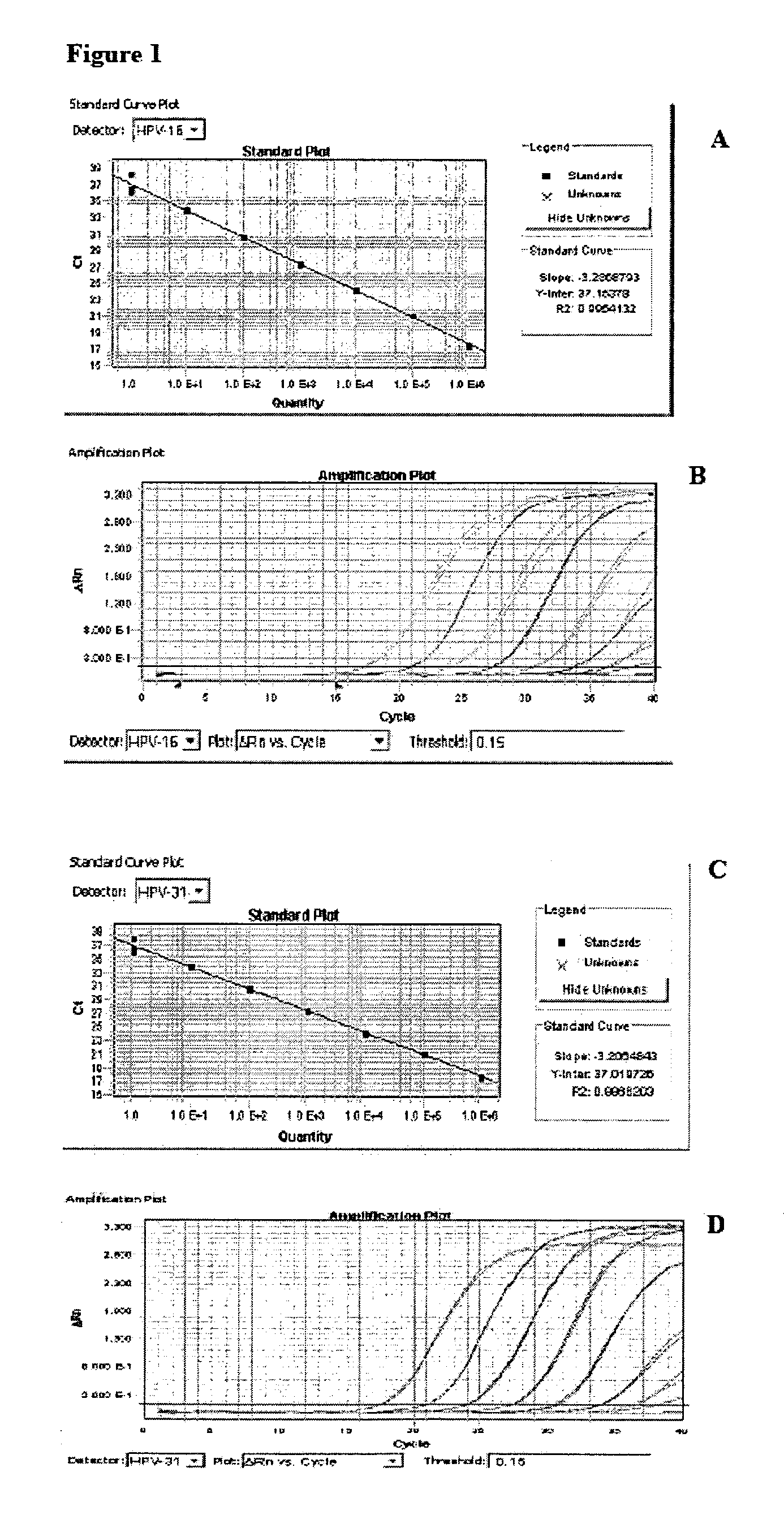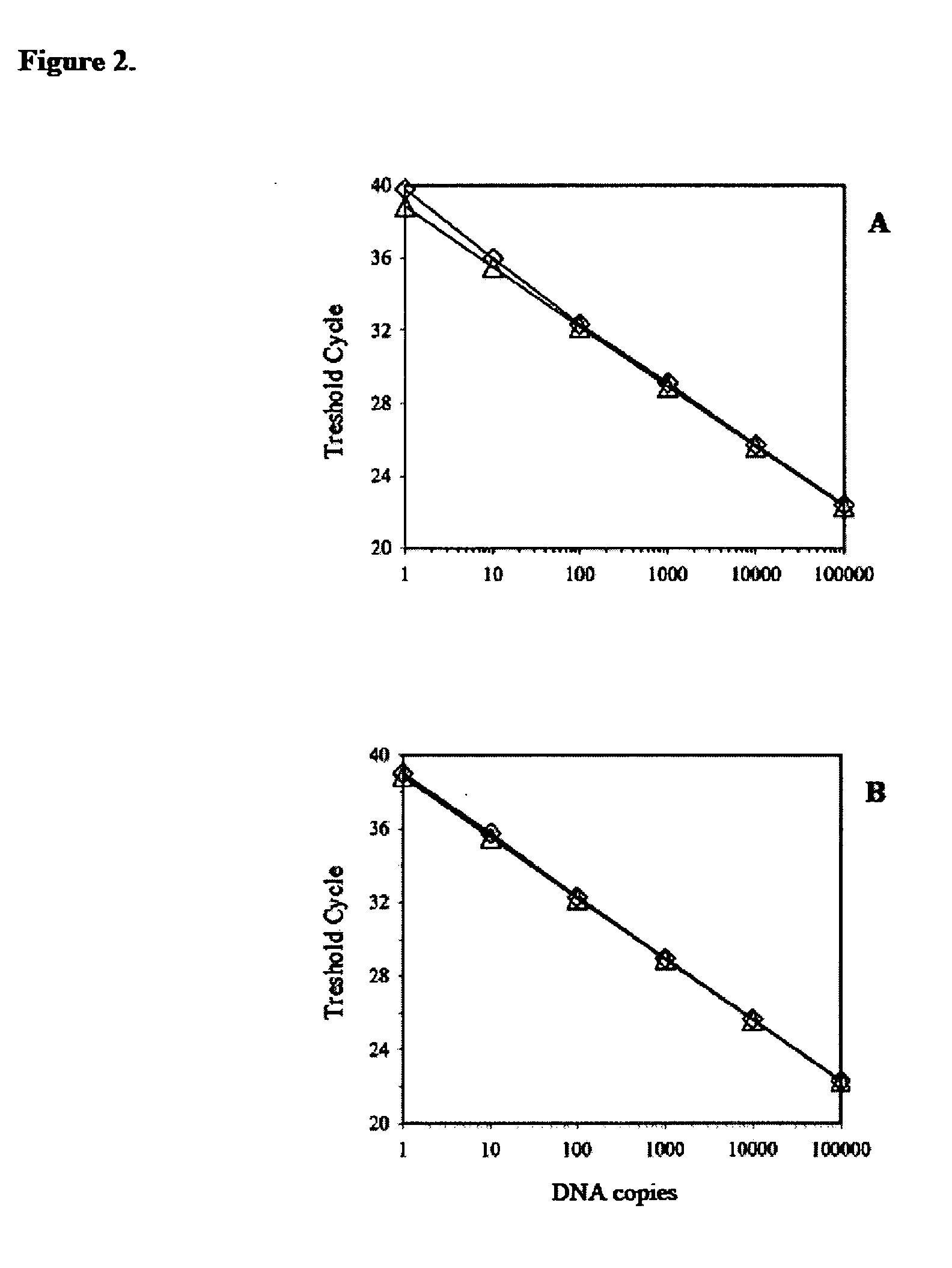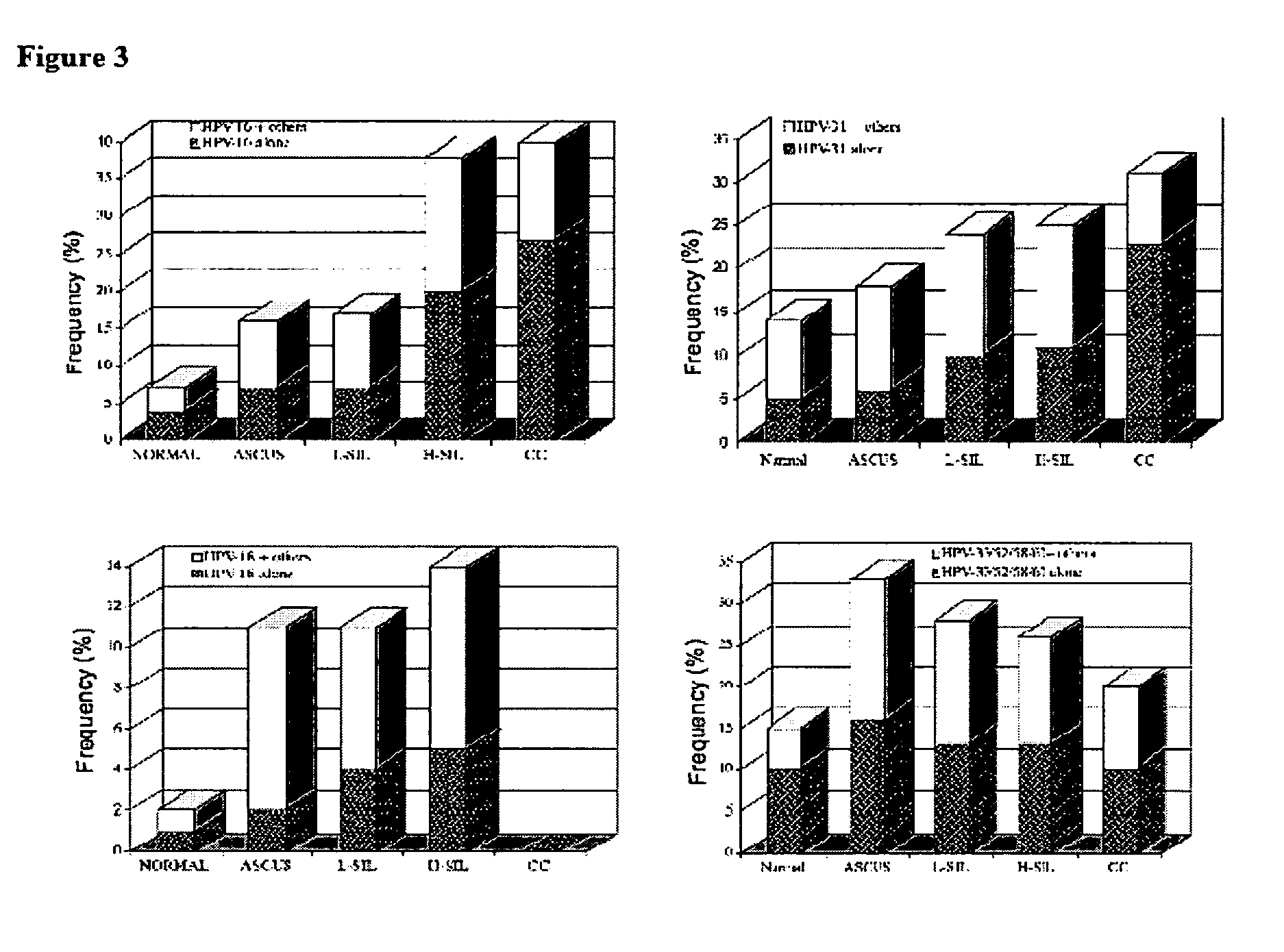Identification and quantification of oncogenic HPV nucleic acids by means of real-time PCR assays
a technology of hpv nucleic acids and quantification methods, applied in the field of identifying and quantifying oncogenic hpv nucleic acids by means of real-time pcr assays, can solve the problems of inefficient methods of identifying women, few reliable quantitative pcr assays have been developed, and the results are not consisten
- Summary
- Abstract
- Description
- Claims
- Application Information
AI Technical Summary
Benefits of technology
Problems solved by technology
Method used
Image
Examples
Embodiment Construction
[0006]The present invention provides a system enabling to detect one or more high-risk HPV genotypes in clinical samples and to determine viral oncogenic activity by means of both specific DNA load and presence of E6 / E7 mRNA.
[0007]This system minimizes the number of parallel reactions performed for each sample and makes it suitable for use in routine screening of biological specimens such as cervical cytological samples, peripheral blood, urine, tissue biopsies and the like.
[0008]The invention more particularly provides a method for the identification and quantification of oncogenic HPV nucleic acids by means of Real-Time
[0009]PCR Assays Comprising:
[0010]1) first line screening by means of 5 independent SYBR Green I Real-time PCR assays to determine the total viral load and to identify the presence of one or more of 13 high risk HPV genotypes in the sample;
[0011]2) second line assays to be applied to samples which have proved positive to first line screening, including:[0012]5 indep...
PUM
| Property | Measurement | Unit |
|---|---|---|
| pH | aaaaa | aaaaa |
| pH | aaaaa | aaaaa |
| volume | aaaaa | aaaaa |
Abstract
Description
Claims
Application Information
 Login to View More
Login to View More - R&D
- Intellectual Property
- Life Sciences
- Materials
- Tech Scout
- Unparalleled Data Quality
- Higher Quality Content
- 60% Fewer Hallucinations
Browse by: Latest US Patents, China's latest patents, Technical Efficacy Thesaurus, Application Domain, Technology Topic, Popular Technical Reports.
© 2025 PatSnap. All rights reserved.Legal|Privacy policy|Modern Slavery Act Transparency Statement|Sitemap|About US| Contact US: help@patsnap.com



